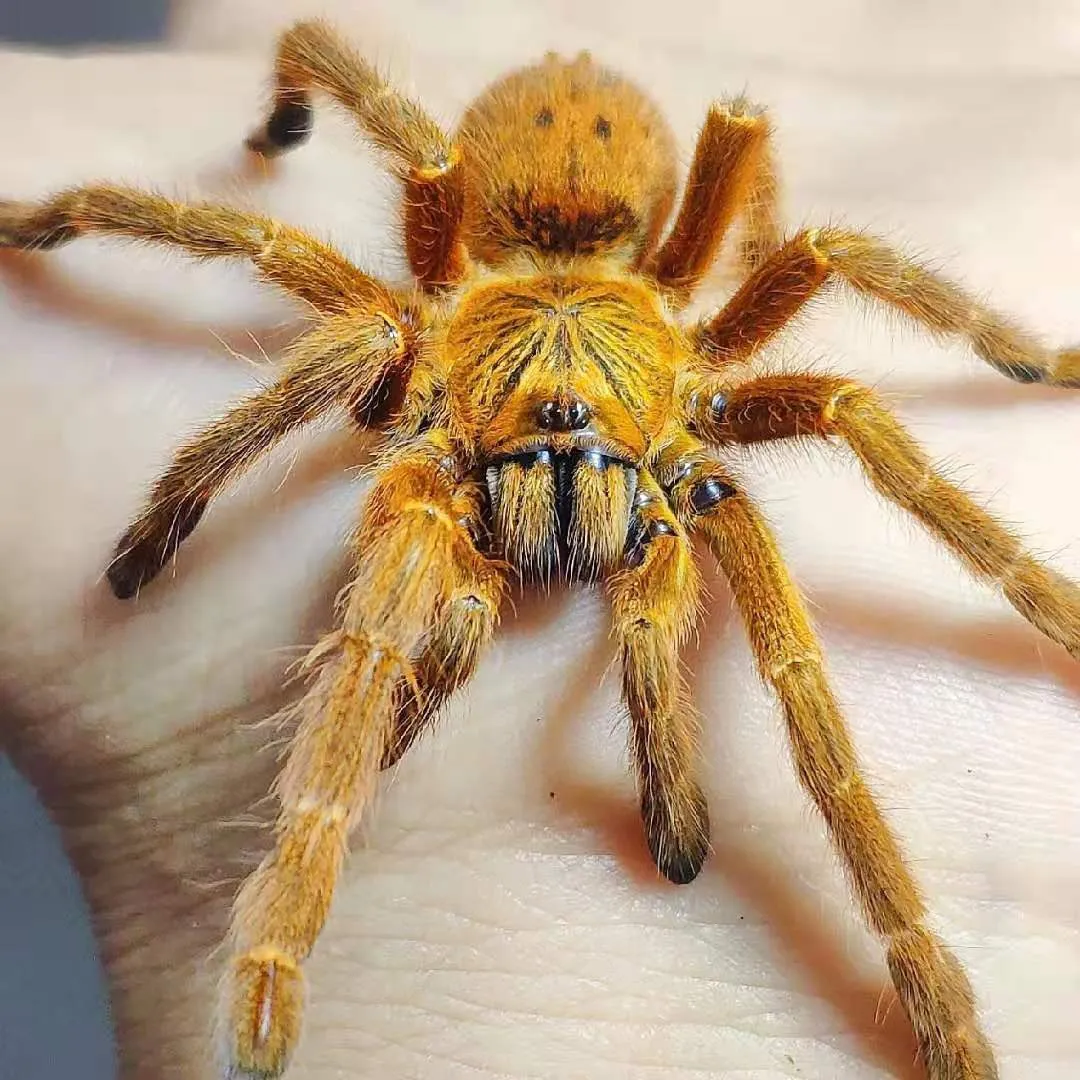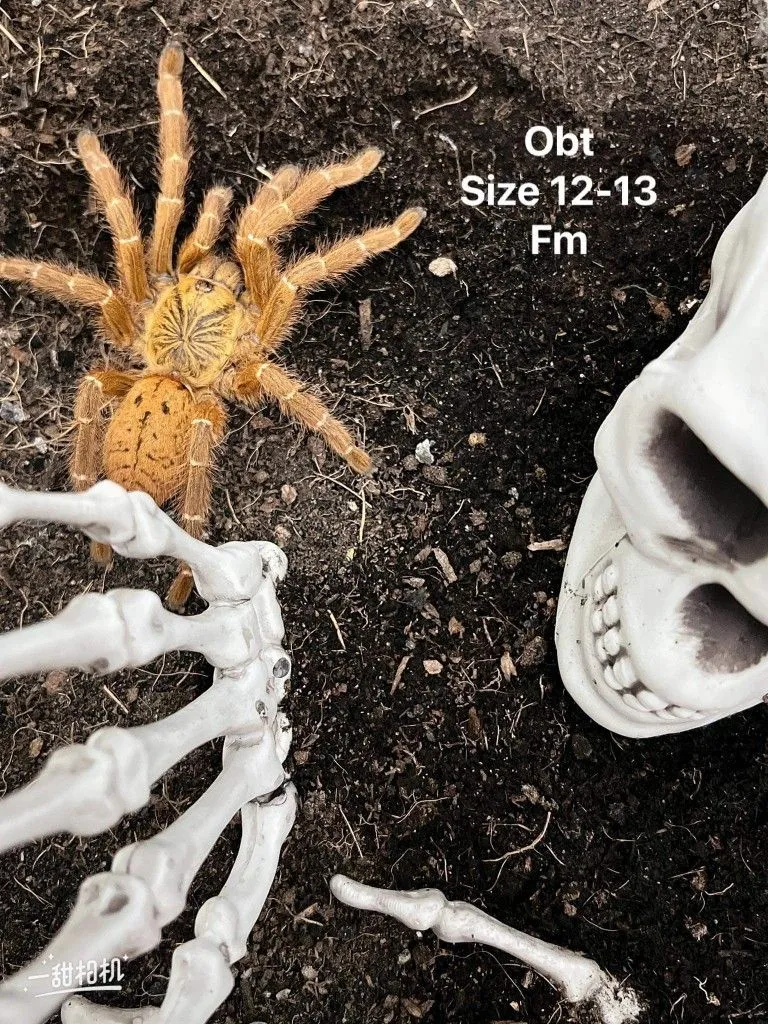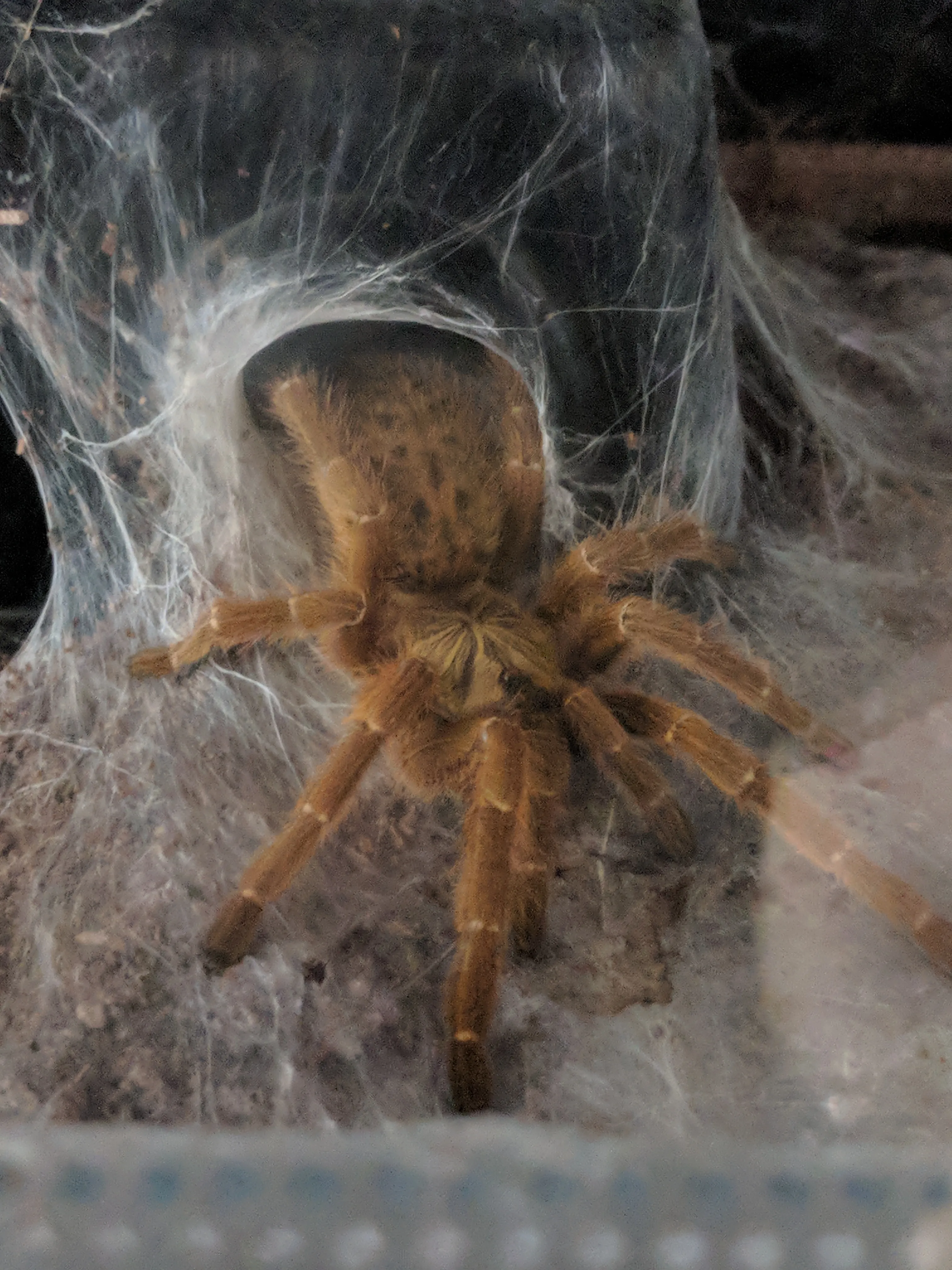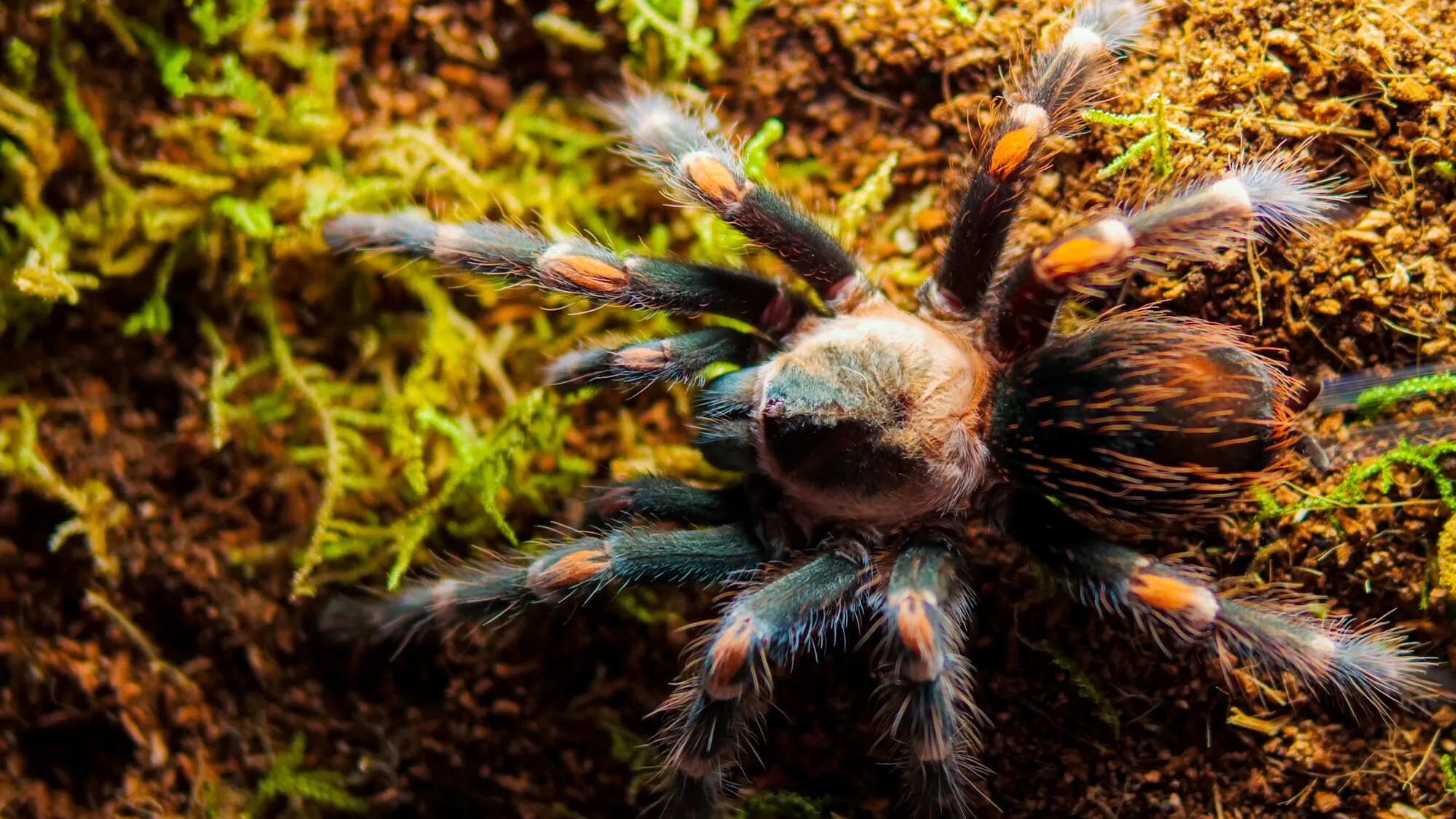Understanding OBT Tarantulas
The Orange Baboon Tarantula (OBT), scientifically known as Pterinochilus murinus, is a fascinating and often misunderstood spider. Native to parts of Africa, this species is known for its vibrant orange coloration and relatively fast growth rate. Keeping an OBT can be a rewarding experience for experienced tarantula keepers. However, their temperament can be unpredictable, and they are known for their defensive behavior. This care guide provides essential information to help you understand and properly care for your OBT, ensuring its health and longevity. Before acquiring an OBT, it’s crucial to research and understand their specific needs, as they are not suitable for beginners.
Origin and Habitat
OBTs are primarily found in the savanna and scrubland regions of Africa, including countries like Angola, Tanzania, and Mozambique. In the wild, they typically inhabit burrows they create in the ground, often under rocks or near vegetation. These environments are usually warm and moderately humid. Understanding their natural habitat is key to replicating the ideal conditions for your pet. The species has adapted to survive in relatively dry conditions, and the availability of shelter is important. Mimicking this environment helps ensure your tarantula feels secure and thrives. Their natural behaviors and needs should be considered when setting up the enclosure.
Appearance and Characteristics

OBTs are known for their striking appearance. Adults exhibit a vibrant orange hue, although the color can vary slightly depending on the individual and its geographic origin. They have a robust build with a leg span that can reach up to 5 inches (12-13 cm) for females. Males are often smaller and may have less intense coloration. These tarantulas also possess urticating hairs on their abdomen, which they can flick as a defense mechanism. These hairs can cause irritation if they come into contact with skin or eyes. They are a fast growing species, especially when provided with adequate nutrition and temperature.
Creating the Ideal OBT Habitat
Creating a suitable habitat is one of the most important aspects of OBT care. A well-designed enclosure replicates the natural environment and ensures your tarantula feels safe and secure. The goal is to provide a comfortable and stimulating living space. This not only supports the spider’s physical well-being but also encourages natural behaviors. The correct setup includes appropriate dimensions, substrate, temperature, humidity, and hiding places, as detailed below.
Choosing the Right Enclosure
For an adult OBT, a 10-gallon terrarium or a similar-sized enclosure is generally recommended. The enclosure should be well-ventilated but secure to prevent escape. Glass or acrylic enclosures work well. Horizontal space is more important than vertical space for terrestrials like the OBT. The enclosure should also have a secure lid to prevent escape, as OBTs are fast and agile. Consider the spider’s adult size when choosing an enclosure. A smaller enclosure might be suitable for a juvenile, but it will quickly need to be upgraded.
Substrate and Decor

The substrate should be about 4-6 inches deep, allowing the OBT to burrow if it chooses. A mix of peat moss, vermiculite, and a small amount of coco fiber is ideal. This mix retains moisture well while providing good drainage. Avoid using soil that contains fertilizers or pesticides. Decorate the enclosure with a hide, such as a piece of cork bark or a hollow log. Provide a water dish that is shallow enough to prevent the tarantula from drowning. Artificial plants can also be added for visual appeal and to provide additional hiding places. Make sure all decor is secure and cannot fall on the tarantula.
Temperature and Humidity
OBTs thrive in temperatures between 75-85°F (24-29°C). A heating pad placed on the side of the enclosure can help maintain this temperature range. Avoid placing the heating pad directly under the enclosure. Humidity levels should be kept between 55-70%. This can be achieved by lightly misting one side of the enclosure once or twice a week. Ensure the enclosure has adequate ventilation to prevent mold growth. Use a hygrometer to monitor the humidity levels. Do not overcrowd the enclosure. Proper ventilation and humidity are crucial factors for the tarantula’s health and well-being.
Feeding Your OBT
Feeding your OBT is another critical aspect of tarantula care. A well-nourished tarantula is a healthy tarantula. It’s essential to provide a balanced diet that meets the nutritional needs of this species. Overfeeding is generally not a concern, as tarantulas are capable of regulating their food intake. The types of food, feeding frequency, and proper water provision all contribute to your OBT’s health and development. Monitoring your spider’s feeding habits can also alert you to potential health issues or environmental stressors.
What to Feed Your Tarantula

The OBT’s diet should consist primarily of insects. Crickets, mealworms, and dubia roaches are excellent choices. Variety is important, so offer a mix of these insects. The size of the prey should be appropriate for the size of your tarantula; it should be no larger than the tarantula’s body. Pre-killed insects can be offered to avoid any risk of the tarantula being injured by its prey. Always ensure the insects are gut-loaded with nutritious food before feeding them to your OBT. This enriches the nutritional value for your spider. Avoid wild-caught insects, as they may carry parasites or pesticides.
Feeding Frequency
Juvenile OBTs should be fed 2-3 times a week, while adults can be fed once a week or even less frequently. Adjust the feeding schedule based on your tarantula’s appetite and body condition. A plump abdomen indicates a well-fed tarantula. If the tarantula stops eating, it may be preparing to molt, or there might be something wrong with the enclosure. Remove uneaten prey within 24 hours to prevent them from stressing or injuring the tarantula. Always ensure fresh, clean water is available at all times.
Water and Hydration
Providing fresh water is vital for your OBT’s health. A shallow water dish should be available at all times. Ensure the water dish is shallow enough to prevent the tarantula from drowning. Use a sponge or marbles in the water dish to provide a safe drinking spot for smaller specimens. Clean the water dish regularly to prevent bacterial growth. Regularly monitor the water level and refill as needed. The spider may also drink from droplets left after misting. Proper hydration is vital, supporting all the biological functions of the tarantula.
Proper Handling and Safety

OBTs are known for their defensive behaviors and should generally be handled as little as possible. They are fast and can be unpredictable, so handling them can lead to bites or urticating hair exposure. If handling is necessary (such as during enclosure maintenance), use a long pair of tongs or a catch cup to safely move the tarantula. Always be aware of the spider’s posture and any signs of agitation, such as a raised defensive stance. Handling should only be attempted by experienced keepers who fully understand the risks involved. Keep children and other pets away from the enclosure to prevent accidental injury.
Identifying Potential Health Issues
Monitoring your OBT for signs of illness or distress is important for its well-being. Early detection and treatment of any health issues can improve the spider’s chances of survival. Regular observation of your tarantula’s behavior, feeding habits, and physical condition can help you identify potential problems. If you notice any changes in your tarantula’s behavior, such as lethargy, loss of appetite, or unusual postures, consult with an experienced tarantula keeper or veterinarian. A proactive approach to health management is crucial for ensuring your OBT lives a long and healthy life. Learn about common issues and shedding to understand how to recognize any issues.
Shedding and Molting
Molting is a natural process for tarantulas, during which they shed their exoskeleton to grow. Young OBTs molt more frequently than adults. Prior to molting, the tarantula may stop eating, become less active, and appear dull in color. Provide extra moisture during the molting process. Do not disturb the tarantula during molting. After molting, the tarantula will be soft and vulnerable; avoid feeding it for a week or two until its fangs harden. The molted exoskeleton can provide information about the tarantula’s health, such as its size and overall condition.
Common Diseases and Prevention

OBTs are generally hardy, but they can be susceptible to some diseases. Mites can infest tarantulas, causing irritation. Maintain proper hygiene in the enclosure and regularly check for mites. Fungal infections can occur in overly humid environments. Ensure proper ventilation and avoid over-misting. If you suspect your tarantula has a health issue, consult an experienced keeper. Maintain a clean and suitable enclosure. Quarantine any newly acquired tarantulas to prevent the spread of diseases. Proper care and environmental conditions are the best preventative measures.
Conclusion
Caring for an OBT can be a rewarding experience for those who are prepared for the responsibility. By understanding their needs and providing the proper environment, you can enjoy your tarantula and ensure a long and healthy life. Remember, patience, research, and a keen eye for detail are essential for success. Always prioritize the safety and well-being of the tarantula by maintaining the required environmental conditions and handling it with care. With proper care, your OBT will thrive. Embrace the opportunity to learn and provide the best possible care for your orange baboon tarantula.
